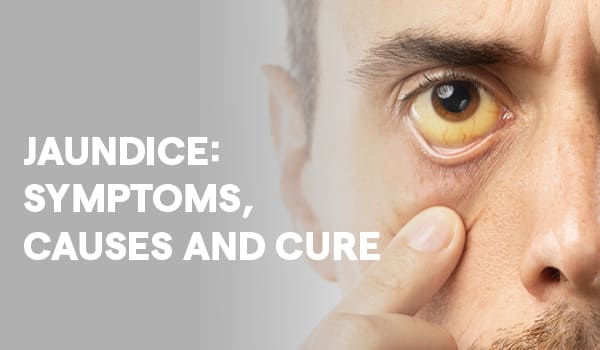
According to research, there were 192 cases of jaundice in 2023 or 2.76 incidences per 1000 people per year. The summer and monsoon seasons (June-September) accounted for more than 60% of all instances.
Symptoms of Jaundice
The most prominent symptom of jaundice is the yellow discoloration of the skin and eyes. Jaundice symptoms may include:
Causes of Jaundice:
Jaundice can be caused by a range of underlying health issues, with the main cause including:
1. Liver Conditions: Liver diseases such as hepatitis, cirrhosis, or liver cancer can lead to jaundice. These conditions can disrupt the liver's ability to process bilirubin, a yellow pigment produced during the normal breakdown of red blood cells. This leads to its accumulation in the body and the characteristic yellowing of the skin and eyes.
2. Hemolytic Anemia occurs: when red blood cells are destroyed more rapidly than they can be produced, leading to an excess of bilirubin in the bloodstream. Conditions such as sickle cell anemia, thalassemia, or autoimmune hemolytic anemia can contribute to the development of jaundice,
3. Bile Duct Obstruction: When the bile ducts, which are responsible for transporting bile from the liver to the intestines, become blocked or narrowed, it can result in the accumulation of bilirubin. Gallstones, tumors, or inflammation of the bile ducts can cause this obstruction.
4. Infections: Certain infections, particularly those affecting the liver, such as hepatitis A, B, or C, can lead to jaundice. These infections can impair the liver's function and cause an increase in bilirubin levels.
5. Medications: Some medications, such as certain antibiotics, antiviral drugs, or nonsteroidal anti-inflammatory drugs (NSAIDs), can cause liver damage and result in jaundice as a side effect.
6. Newborn Jaundice: In newborns, jaundice can occur due to the immature liver's inability to process bilirubin efficiently. This common and usually harmless condition often resolves on its own.
Cure for Jaundice:
The treatment for jaundice depends on its underlying cause. In many cases, addressing the root issue can help resolve jaundice. Treatment options may include:
1. Managing Underlying Conditions: If jaundice is caused by liver disease, anemia, or infections, addressing these primary conditions through medications, lifestyle changes, or medical procedures can help alleviate jaundice.
2. Bile Duct Clearance: In cases where jaundice is the result of a bile duct obstruction, procedures such as endoscopic retrograde cholangiopancreatography (ERCP) or surgery may be necessary to clear the blockage and restore proper bile flow.
3. Phototherapy: For newborns with jaundice, phototherapy, which involves exposing the baby's skin to special lights, can help break down excess bilirubin and alleviate the symptoms.
4. Liver Transplant: In severe cases of liver damage or failure, a liver transplant may be considered a potential cure for jaundice.
Sir Ganga Ram Hospital, liver gastroenterology hospital in Delhi has a team of expert gastroenterologists to diagnose and treat all types of jaundice.
Book an Appointment with Sir Ganga Ram Hospital.
Sources:
PubMed: Epidemiology of endemic viral hepatitis in an urban area of India.